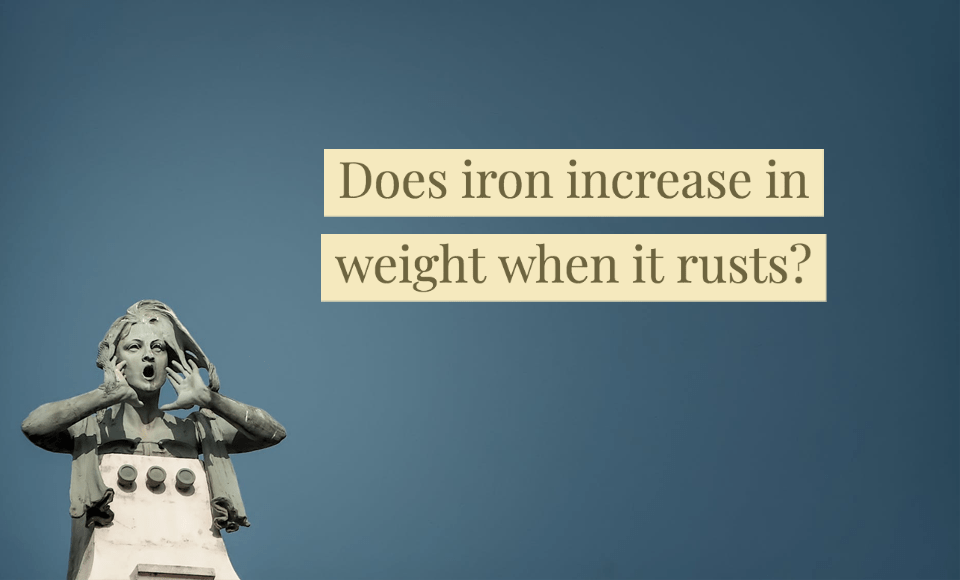A concise answer is both yes and no. Iron rusting, and the processes inherent to it, have some interesting peculiarities that lead to this conclusion. Before delving into the yes and no answers, a little background information is needed.
What is rust? How does it form? Rust often appears as a reddish-brown material on metal, specifically iron. Iron, and its alloys (like steel), rust when exposed to oxygen and moisture. Essentially, iron will rust over time unless it is in the middle of an extremely dry environment like a desert. Rust’s chemical compound is officially called iron oxide (Fe2O3). This means that a rust molecule is comprised of two iron molecules and three oxygen molecules. Rust forms when iron and oxygen react and combine.
Rust can form without the presence of a catalyst to speed it along, like water, but the process will be much slower than normal. Besides water, salt and some other common catalysts also speed up the rusting process. Rust can also appear as a greenish coating. When iron reacts with chloride in a submerged, underwater environment, green rust will form. This type of rust is most often seen on things like underwater steel support beams.
Picking up the answer to the question asked, how does rust increase the weight of iron? Well, looking back at the chemical formula of rust (Fe2O3) shows that oxygen was added to the previously pure iron. While oxygen is a gas being added to a solid, it still does have mass and therefore weight. When iron rusts, oxygen is incorporated into its molecular structure, increasing its weight, however slight.
If rust does increase the weight of an iron beam over time, how then does it decrease its overall weight? Rust is very, very fragile. Unlike the dense, sturdy structure of iron, rust is brittle and crumbles easily. If left undisturbed, iron and rust will combine to form a whole that does weigh more than the pure iron did. But when exposed to wind, water, or any other sort of disturbing element, the rust will crumble away, leaving a lighter weight than before. Part of this issue lays with the oxygen. The oxygen adds a layer of fragility and lightness that iron does not have. Eventually, iron will rust away entirely, leaving nothing in its place.
Rusting metal could be, and often is, a huge problem in machinery and infrastructure. Methods to prevent rusting are necessary to any sort of stable structures. If a bridge were to begin to rust away, the people using it would be in catastrophic danger. So how do people prevent iron from rusting? There are a couple cheap, common techniques used in industry today. The obvious solution is to coat the iron. If the iron comprising a structure is not exposed to the air, then it cannot react with any oxygen, preventing rust from cropping up.
One such coating technique is called galvanization. Zinc is added in a fine layer across any exposed iron. Zinc does not rust, thus this coat prevents the iron from ever being able to react with the air. The second seems rather silly but may not be obvious at first glance. Paint! A few coats of paint can and will prevent iron from rusting through the same principle as other types of coating. The only drawback to this method is that paint needs to be freshly applied more often than a layer of zinc.
How to keep your metal items rust free:
One of the best methods is to buy stainless steel supplies. This steel is iron mixed with approximately 11% chromium to prevent rusting. The inherent chemical properties of this compound prevent rust entirely. Stainless steel products like a grill are especially useful for home life. Other types of stainless steel products are immensely useful for their longevity and continued quality.
